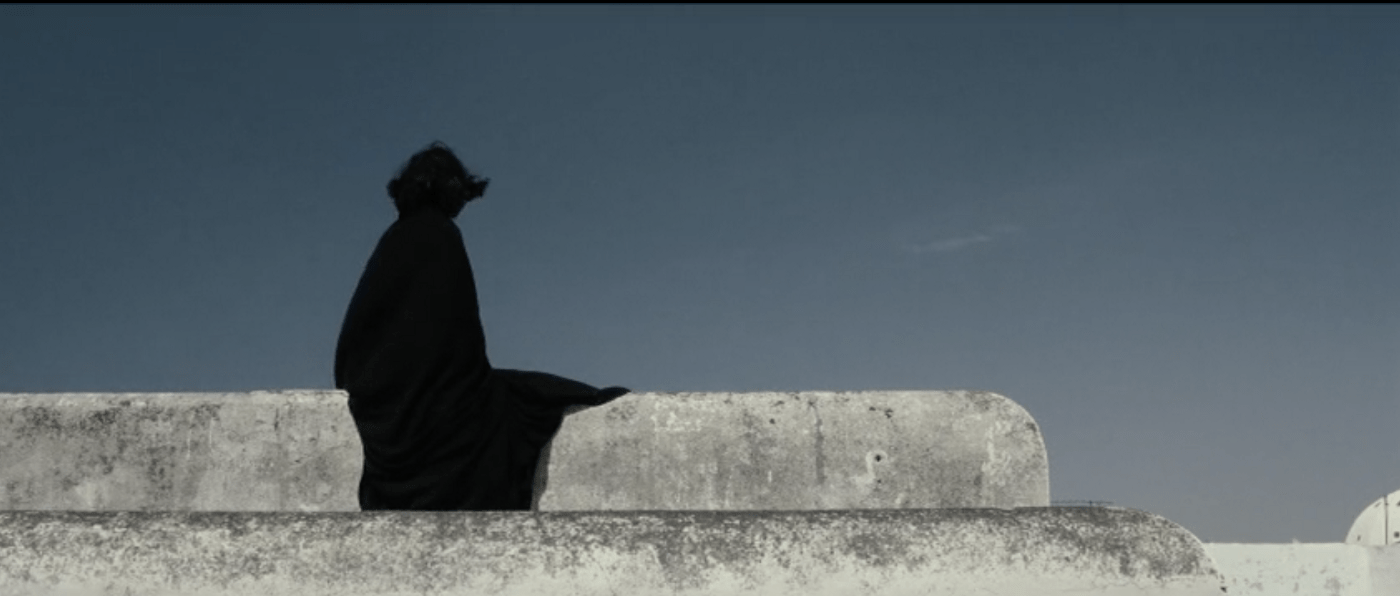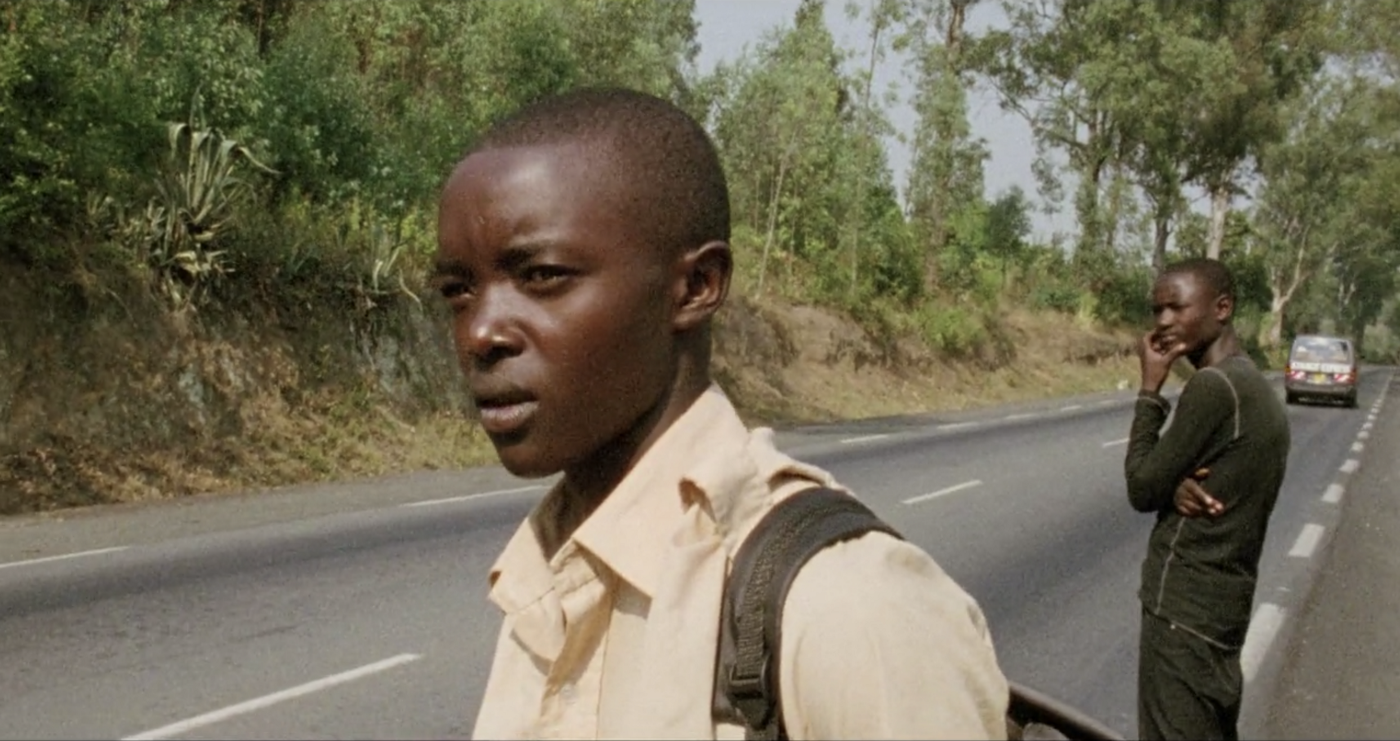
Seven years before Bong Joon-ho made Parasite, Dutch director Alex van Warmerdam released his film Borgman. The two films have superficial as well as substantive similarities in both style and content. Both films take place in an austere and affluent suburban home, where a family is methodically manipulated and rearranged to suit a group of outsiders. Both films share a dark sense of humor that causes the viewer to laugh at grim or violent events. Both films use class as a driving force to fuel conflict and underscore economic disparity.
Where they differ most is in the use of the absurd. For the most part, Bong Joon-ho limits his film to what is plausible. There are certainly moments where reality is stretched, often for comic effect, but for the most part, there is nothing magical or truly bizarre. Not so for Warmerdam’s Borgman.
The grifters in Borgman are not a family as the Kims are in Parasite. Borgman’s interlopers are a strange, dour crew that literally springs up from beneath the ground. We are introduced to them when we follow a shotgun-toting priest and a few other townsfolk through the forest where they are hunting the crew. Each one of the crew is carefully concealed in a hole in the ground. When they jump out to escape they are dressed in three-piece suits and are ready to swiftly blend into society. It’s almost as if they are shapeshifters or some otherworldly forest spirits.

In Parasite the Kim family also lives below ground to emphasize the class difference between them and the Parks. In both films, the emphasis is on the otherness of the intruders. The forest people of Borgman seem to be of a lower class or even vagrants, but the absurdity of their origin and their strange behavior pushes their status as outsiders even further.
Borgman follows a tradition in film, and in narratives in general, where a conventional, affluent couple is subjected to an attack by a less civilized, more primal force. Films like Nosferatu, Rashomon, or Straw Dogs assault society’s basic building block, the married couple. The nuclear family is a stand-in for society’s values, they exemplify what society holds most dear. The idea in such films is to apply stress to the marital relationship with the forceful introduction of base and libidinal behavior and then observe the result. It can be a way to either reaffirm social values by showing their necessity or undermine social values by showing their weak artificiality.

The film Borgman is named after the leader of the grifting crew who quietly orchestrates a systematic dismantling of the married couple’s home. The couple is named Richard and Marina. They live a seemingly idyllic, upper-middle-class life in the clean, orderly safety of the suburbs. The placid facade of the suburbs, like the married couple, is often used as a way of illustrating societal repression of any behavior that does not conform to mainstream norms. Examples abound like The Stepford Wives, Happiness, Blue Velvet, The Ice Storm, Get Out, and The Graduate. All of them seek to peel back the contented mask that the suburbs dons.
On the movie’s poster Borgman is made to look like Svengali. The comparison is apt in that both men seem to have preternatural abilities to control people, but Borgman isn’t interested in sex or power. It’s never clear what he is interested in. This ambiguity is contrasted against his completely methodical demeanor and a sense that everything is completely planned out.

The absurdity in the film comes from the mysterious plan itself which includes completely bizarre and often shocking behavior. Lots of people are murdered simply because they pose a minor inconvenience to the plan. A wonderfully dark refrain is the accumulation of murder victims at the bottom of a lake. Borman’s crew cement each victim’s head in a bucket and then throw them into the water where they slowly sink and eventually plant themselves like gruesome trees at the bottom.

Borgman is a bit like Martin in The Killing of a Sacred Deer. They both have a dampened affect that increases their air of menace. They both seem to have everything under control despite the fact that what they are doing is chaotic, and they both seem to have some otherworldly powers. Borgman, and his crew as well, seem to be able to shape people’s will although sometimes it appears that they may be simply providing opportunities for people to express their more primitive urges.
Everyone in The Killing of a Sacred Deer adopts a profoundly dead deadpan. It’s unnerving and speaks to a kind of existential emptiness inherent in modern life. The deadpan in Borgman is more indicative of a dark, Nordic humor, where people’s lives are ultimately hapless struggles to defend what little meaning they have managed to construct for themselves. Borgman and his crew are an entropic force removing the supports and the screws that hold the structures of our lives together. They stand stone face and silent while observing those structures wobble and eventually collapse. Symbolic of this process is Borgman’s work in the garden. The suburban family hires him as a gardener and he proceeds to roll in bulldozers and cranes and simply destroy the garden piece by piece. He and his crew do all of this in their suits and sunglasses like some team of deranged mafia hitmen doing community service

The garden and the house are another thing that Borgman shares with Parasite. There is a play between how the internal and external environments effect the characters. The gardens in both films are carefully maintained and manicured. They are an extension of the same aesthetic that is inside the house, but there is still a sense that the house is safer, more restricted than the outdoors. It’s as though the rarefied garden is an attempt to bring the decorum of the indoors to the rest of the outside world but ultimately fails. In Parasite the garden eventually turns into a bloody and wild conflict as people’s emotions overwhelm their ability to be civil.
Both films have a sense that the world is a difficult place where both success and happiness are elusive. The home is meant to be a controlled refuge from the world’s troubles but none of the characters, be they invader or invaded, in either of the films is able to find a safe place to make their own.

What truly distinguishes Borgman is that the film never fully reveals itself. In Parasite the motivations of each of the characters are clear. Each character’s behavior can be understood and even sympathized with to a point. In Borgman, we are never given the full story, but this directly mimics the nature of our existence. As humans, we are forever frustrated by our inability to truly establish a meaningful or ordered reality. Eric Fromm referred to this when he explained, “Man is the only animal for whom his own existence is a problem which he has to solve.”
The character of Borgman is able to exploit his victims because they are made vulnerable by their own dissatisfaction. A narrative requires that its characters want something they do not have. In Parasite it’s money and status, in Borgman it’s meaning.

If you enjoyed this article click here for more
www.filmofileshideout.com/archives/nordic-humor-in-the-northerners



